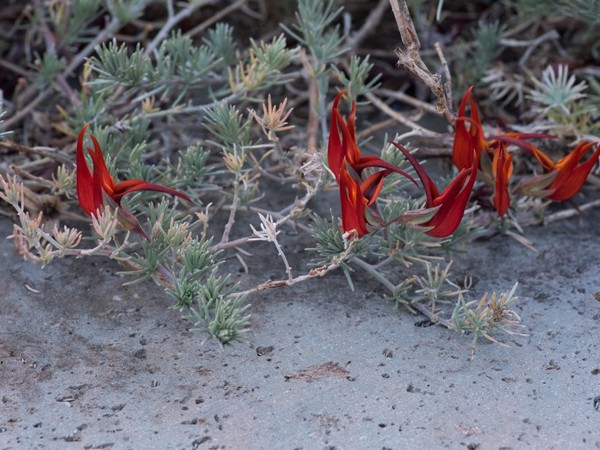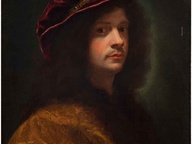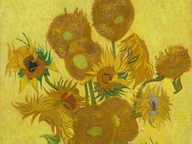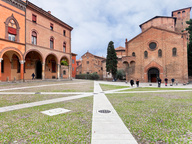Michael Wang. Extinct in the Wild

From 08 Febbraio 2017 to 09 Aprile 2017
Milan
Place: Fondazione Prada
Address: largo Isarco 2
Times: Sun / Mon / Wed / Thu, 10 am - 7 pm Fri / Sat, 10 am - 8 pm Closed on Tuesdays The ticket desk remains open until one hour before closing time Visitor Services are available daily, 10 am - 6 pm
Ticket price: intero € 10, ridotto € 8 (Studenti fino ai 26 anni Possessori tessera FAI Accompagnatori visitatori con disabilità Gruppi 15-25 persone), gratuito Visitatori sotto i 18 e sopra i 65 anni Visitatori con disabilità Giornalisti accreditati o in possesso di tessera stampa in corso di validità
Telefono per informazioni: +39 02 5666 2611
E-Mail info: info@fondazioneprada.org
Official site: http://www.fondazioneprada.org
“Extinct in the Wild”, conceived by American artist Michael Wang (1981), brings together flora and fauna that are no longer found in nature, but persist exclusively under human care, within an artificial habitat. Labelled with the officially designated term “extinct in the wild”, these species have left nature behind to fully enter the circuits of human culture.
In this project, natural beings such as plants and animals are transplanted into an exhibition and cultural space. In the age of extinction, such displacements are not only aesthetic devices but stand for actual strategies of survival.
A preview of the show, open to the public, will be held on 8 February 2017, from 7 to 9 pm.
Michael Wang conceived an exhibition in which three glass and aluminum enclosures with artificial lights accomodate these extinct species within the space of the Nord gallery, where a selection of photographs is also exhibited. Some of those species, such as the ginkgo (Ginkgo biloba) are common in cultivation. Others, like the blue cycad (Encephalartos nubimontanus), are some of the rarest species on earth. Some animals have persisted in artificial conditions for many years, like the aquatic axolotl (Ambystoma mexicanum), which was known only from the Aztec canals of Mexico City, most of which have long been drained. Angel’s tears (Brugmansia suaveolens), a plant with fragrant white flowers, disappeared from the wilds of South America with the extinction of the species that distributed its seeds. Nonetheless, its religious significance as a potent psychoactive drug insured its survival in traditional cultivation. Several species have survived only through heroic human efforts. The Hawaiian ōlulu (Brighamia insignis), for instance, whose last specimen was recorded in 2014, was rescued from extinction thanks to a team of botanists who hand-pollinated the very last individuals and collected seeds, by rappelling into the steep ocean cliffs on the island of Kaua’i. The exhibition is completed by a series of 20 photographs, taken by Michael Wang from 2014 to the present day, which portray different extinct in the wild species and the original habitats where they lived prior to their extinction in nature.
For the duration of the show, exhibition staff will tend to these living organisms, joining the ranks of gardeners, zookeepers, scientists and hobbyists who are the species’ only lifeline. The curators become caretakers, returning the practice of curation to its ancient roots in cura, meaning “care.”
“Extinct in the Wild” is one of the three ex-aequo winning projects (along with those conceived by Evelyn Simons and Adnan Yldiz) of “Curate Award”, an international competition promoted by Fondazione Prada and Qatar Museums. Launched in May 2013, “Curate Award” aims to find new curating talent and to bring about original perspectives in exhibition making. The international jury selected the three winning projects in August 2014 among a large number of submitted proposals from 63 different countries.
SCARICA IL COMUNICATO IN PDF

-
 Dal 31 gennaio 2024 al 04 maggio 2025
Fermo | Palazzo dei Priori
Dal 31 gennaio 2024 al 04 maggio 2025
Fermo | Palazzo dei Priori
-
 Dal 20 dicembre 2024 al 04 maggio 2025
Fermo | Palazzo dei Priori
Dal 20 dicembre 2024 al 04 maggio 2025
Fermo | Palazzo dei Priori
-
 Dal 20 dicembre 2024 al 04 maggio 2024
Gorizia | Palazzo Attems Petzenstein
Dal 20 dicembre 2024 al 04 maggio 2024
Gorizia | Palazzo Attems Petzenstein
-
 Dal 18 dicembre 2024 al 18 dicembre 2024
Venezia | Museo Correr
Dal 18 dicembre 2024 al 18 dicembre 2024
Venezia | Museo Correr
-
 Dal 14 dicembre 2024 al 02 marzo 2025
Palermo | Palazzo Abatellis
Dal 14 dicembre 2024 al 02 marzo 2025
Palermo | Palazzo Abatellis
-
 Dal 12 dicembre 2024 al 23 febbraio 2025
Roma | Palazzo Altemps
Dal 12 dicembre 2024 al 23 febbraio 2025
Roma | Palazzo Altemps


